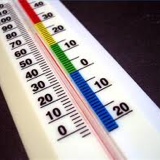Information
-
Site conducted
-
Person carrying out the inspection
-
Site Address
-
Location of Scaffold i.e Front, side(s) or Rear of property
-
Conducted on
-
Name of company that have erected the scaffold
-
Completed on
Disclaimer
-
The inspector believes the information contained within this Inspection report to be correct at the time of printing. The inspector does not accept responsibility for any consequences arising from the use of the information herein. The Inspection report is based on matters which were observed or came to the attention of the inspector at the time of the assessment of the scaffolding and should not be relied upon as an exhaustive record of all possible risks or hazards that may exist or potential improvements that can be made. Information on the latest workers compensation and OHS/WHS Laws can be found at the relevant State Work Cover/Work Safe Authority. Confidentiality Statement To maintain the integrity and credibility of the risk assessment processes and to protect the parties involved, it is understood that the inspector will not divulge to unauthorized persons any information obtained during this assessment unless legally obligated to do so.
-
undefined
-
Are there TG20 Compliance sheets or design drawings available?
-
Have the Scaffolds been built in accordance with the compliance sheets or design provided?
Footings
-
Has the scaffold been erected on the ground that is firm, even and free from debris?
-
Are sole boards in place and at the correct dimensions? (450mm x 220mm)
-
Have suitable base plates been used? (150mm x 150mm)
Standards
-
Are the standards correctly plum and within the allowed erection tolerance? Note: tolerance of 20mm in every 2m of height, to a maximum overall deviation of 50mm
-
Are the joints staggered? Note: standards should be staggered so that adjacent standards are not joined within the same lift
Ledgers
-
Are the Ledgers correctly parallel and within the allowed erection tolerance? Note:- tolerance of 20mm in every 2m of height, to a maximum overall deviation of 50mm
-
Are the joints staggered? Note: joints in ledgers should be staggered so that adjacent standards are not joined within the same lift. However, the absence of a joint in the guard rail my be accepted giving sufficient continuity to the scaffold to permits joints in the same ledgers above and below it in the same bay.
-
Are the lift heights within the allowed erection tolerance? Note: lift heights should be planned by considering the intended use of the scaffold. The TG20 compliance sheet will determine the lift height of a scaffold. Typically will be 2.7m on the first lift and 2 or 3m thereafter.
Transoms
-
Are the transoms of the correct length and do they protrude 25mm past the coupler?
-
Is there a transom fitted within 300mm of the node point at ledger braced standards?
-
Are the transoms spaced correctly on boarded and non boarded lifts?
The Scaffold, Ledger, Façade and Plan Bracing
-
Is the first boarded lift of the scaffold at the maximum height of 3m?
-
Does the scaffold have protection to stop falls at all openings? Such as gates or a pivot rail?
-
Does the scaffold have a visible 'Scaff tag' on all access points, filled out correctly?
-
Has the correct type of tube been used depending on design? Note:- Tubes should be manufactured to BSEN39-2001 specs. TG20 compliant scaffolds only permit BSEN39 type 4 or Steel tube BSEN10210-1 to be used
-
Is the scaffold in good condition at time of inspection?
-
Is all bracing connected within 300mm of the node point? Note:- No bracing should be fitted to guard rails
-
Is all bracing set at the correct intervals? Note: Façade bracing is required on every lift, and every six bays. Ledger bracing should be fitted to every third pair of standards.
-
Is all bracing connected using load bearing fittings? Note: load bearing couplers are manufactured to EN74 standard and are marked either A or B. Couplers manufactured to BS1139 are also acceptable
Ties
-
Are all ties been set at the frequency of the compliance sheets or design drawing? Note:- Ties should be set and tested per the TG20:13 compliance sheet. All ties should be tied to the front and back standards, using load bearing couplers. Ideally ties will be fixed at ledger braced fram.
-
Have primary pull tests been carried out?
-
Where ties cannot be used is another system in place to retain the scaffold? Note:- Rakers may be used up to the tie position on the 2nd light, on very light weight scaffolds. Rakers cannot be used on any scaffolds taller than 6m. All rakers should be fitted with a restraint tube. Rakers should be fitted to the end standards and every other set of standards in between.
Boarded Lift
-
Are the boards in good condition with no excessive splits, or notches? Note: all boards should be 38mm thick. No boards should signs of ill treatment, warping, abuse or decay. All should contain a nail plate or end hoop. No split should exceed 225mm in length. No cuts should be deeper than 2mm.
-
Are all boards on the scaffold tied down? Note:- including any unboarded lifts.
-
Is the working platform free from gaps and trip hazards?
-
Do all inside standards protrude 1mtr above the working platform?
-
Are all inside boards secured to prevent movement?>
-
Are the boards supported by at least 50mm past their last support and not exceeding 150mm?
Handrails, Toe Boards & Brick Guards
-
Are Handrail and toe boards fitted where there is a risk of persons or materials falling?
-
Are the handrails at the correct height 950mm with a gap not exceeding 470mm between the toe board and the handrails?
-
Are the handrails and toe boards correctly fixed (toe boards over 2 standards) and are the joints not in the same bay as the ledgers below? Note:- Toe boards should be fixed to the inside of the standards with a putlog coupler or a variety of proprietary clips. Guard rails should be positioned to the inside of the standards, attached by right angled coupler. The lower guard rail should be a max. of 470mm above the toe board, with the top rail a min. of 950mm from above the decking.
-
Are internal guard rails required? Note:- internal guard rails are required if the internal gap exceeds 225mm
-
Are the brick guards in good condition and correctly secured?
Ladder/ stair access
-
Are the ladders on a firm and even base and supported only by the stiles?
-
Are the ladders correctly secured with either lashing or single fittings that wrap around the stiles?
-
Do the ladders protrude at least 1m above the working platform? & where this is not possible is there an adequate handhold provided?
-
Are the stair treads in sound condition and free from hazards that could cause harm?
-
are the stair treads fixed securely with no movement?<br>
-
Are all the Half landings complete with Handrails and toe boards?
Housekeeping
-
Are all the spare materials in a neat and tidy condition?
undefined
Sign Off
-
Please list any matters or issues arising from inspection:
-
Details of any further action considered necessary
-
Can work be carried on safely?
-
Name of person receiving report:
-
Name of person completing report
-
Time & Date
-
undefined
-
Signature:















